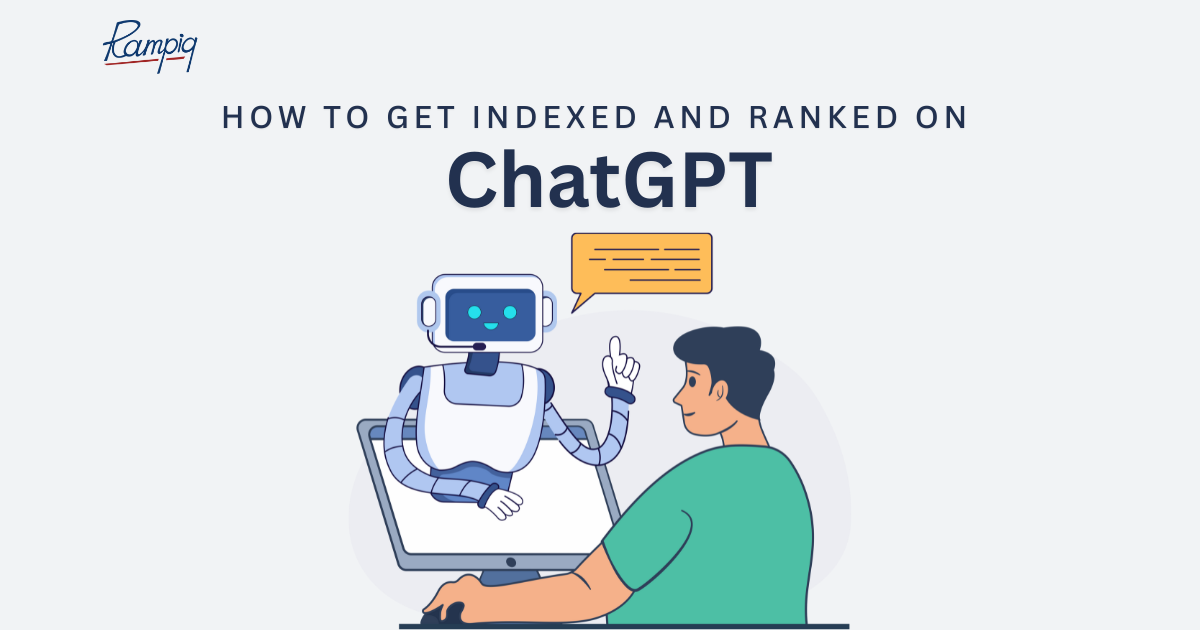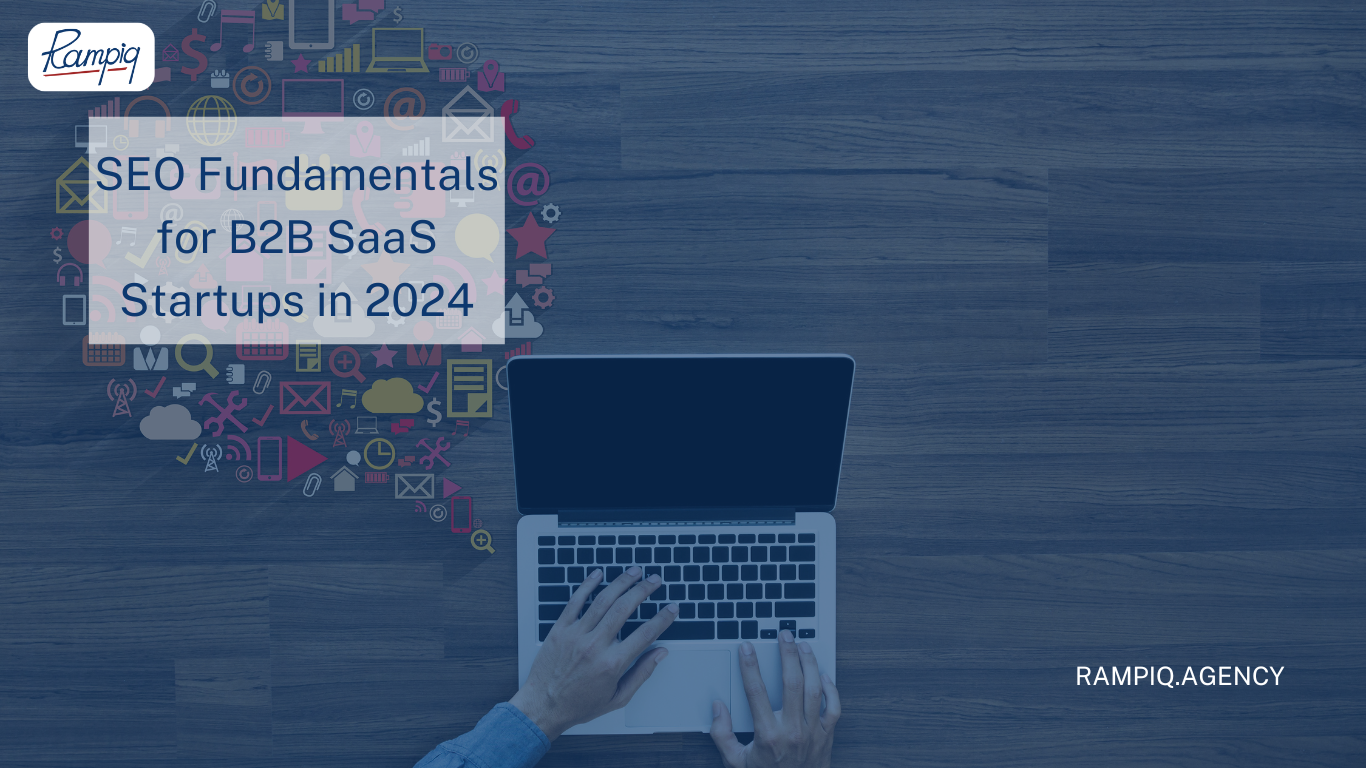Before reading about the exact stages of efficient lead gen, learn why it is especially critical for B2B SaaS businesses and what types of B2B leads there are.
Importance of lead generation for B2B SaaS companies
B2B SaaS companies don’t survive without effective lead generation primarily because of very high competition levels. The business world is becoming more digital year after year, and with that grows the number of SaaS companies offering their products for corporate needs. Being able to stand out from the competition and sell your product’s unique features is vital.
B2B SaaS companies sell intellectual property with a lot of time, money, and human resource invested in it. And you’ll be looking to get at least acceptable ROI as quickly as possible, especially in the case of a B2B SaaS startup. Successful lead generation campaigns can make the difference between creating industry-leading software and abandoning the project altogether..
What are the types of B2B leads?
B2B leads are divided into 3 major categories: IQLs (information qualified leads), MQLs (marketing qualified leads), and SQLs (sales qualified leads).
IQL (Information Qualified Lead)
IQLs are leads that only began research on possible solutions to their pain points. They often don’t know much about your company. Typically, they would have given you some background on their company but have not yet shown any obvious interest in your product. An IQL usually comes when they fill out a form trying to download some valuable information assets that you offer – free ebooks, whitepapers, and so on.
It’s recommended to send follow-up emails with content related to an IQL’s initial request a couple of days after. More emails should follow, also with 3-5 day intervals, with each email offering a more enticing proposition, a free webinar, for example.
MQL (Marketing Qualified Lead)
MQLs are leads that are in the final stages of their research. They differ from IQLs either by the quantity or the quality of their actions on your website. The more info resources a lead tries to access, the closer they are to be an MQL. Likewise, if you see that they are interested in more targeted, specific information, they can also be considered in MQL.
These leads are clearly more interested in your services, but not fully ready to talk numbers, terms, and conditions. Send them follow-up emails containing information on how exactly your product can help them with their problems and encourage them to get in touch with you.
SQL (Sales Qualified Lead)
SQLs are leads that have expressed willingness to talk with your sales team. They’ve shown a lot of interest in your offers and are seriously considering making a purchase.
You should treat these leads as very hot and get in touch with them as soon as you can, preferably by phone, if appropriate and possible. Before that, look up as much background information as you can find on the lead – their country of residence, their job position, their company, and their career. This will give you guidance as to how you should hold a conversation with them to make it more personalized.
Outline of the guide
This guide contains 6 sections which are step-by-step instructions on how to generate B2B SaaS leads successfully. The guide aims to provide a lot of practical value by giving not just vague tips, but a specific plan with specific actions you need to undertake as a SaaS business to boost your marketing results.
This plan encompasses:
- Planning your lead gen campaign (identifying your marketing funnel, buyer personas, value propositions and budget);
- Building a lead gen website (what it should contain, what landing pages and lead magnets are, how to best optimize them);
- Driving traffic and generating leads (looking into what channels and lead generation strategies there are, breaking down inbound and outbound marketing);
- Content creation and distribution (discussing what types of content you should prioritize and what you should consider when creating that content);
- Testing, optimization, and management (how to handle a lead campaign that is already in progress);
Additional resources and considerations (what lead gen tools you can utilize, extra tips on B2B SaaS lead generation, and why you may want to consider reaching out for help to an experienced B2B SaaS marketing agency).
1. Planning and strategy
The marketing funnel
The cornerstone of any successful B2B SaaS lead generation campaign is a well-devised marketing funnel. A marketing funnel (or a purchase funnel) is a roadmap for guiding potential clients from their first interaction with a business to becoming paying clients.
The awareness stage is situated at the top of the funnel. This is the initial stage of the marketing process where a prospect first learns about your business.
When a lead is already familiar with your brand, the next step down the funnel is to generate interest. The lead should be made to recognize your services as an opportunity to improve their business.
Another step down is triggering a purchasing intent. Leads who have shown interest in using your services should be pushed to take action. This action is typically filling out a contact form on your website or calling your team directly.
Finally, a purchase lies at the bottom of the funnel. Once a lead contacts your team, it’s now your responsibility to meet their intent and push them to pay for your services. Try to forecast how many of top-of-the-funnel leads like MQLs will become SALs, and how many of those will become SQLs – this will be important when working out a budget.
Identify your ICP and develop buyer personas
ICPs, or ideal client personas, are the people that your business wants to see as buyers the most. Before you even start thinking about marketing strategies, you need to understand who is actually going to be the target audience for these strategies. Think about the industries you want to target, the company sizes, and the countries, also think about the type of decision-makers you want to appeal to, their job titles, and their professional experience.
To develop buyer personas, look into your lead database to uncover trends and patterns of how certain customers find and consume your content. Gather feedback from your sales team, since they interact with leads on a daily basis and can tell which profiles are most preferable. You can even interview current customers to learn what they like about using your software.
You will rarely have just one ICP profile, moreover, it’s not recommended. You should generate a couple of very specific personas and A/B test various marketing strategies on them.
Establish your unique value proposition
With the funnel and the target audience set, we now define a clear message that you are going to send out to our potential leads. From the moment a prospect first learns about your product to the moment of purchase, they need to feel that you’re providing them with substantial value.
Three main notions you need to keep in mind when working on your UVP are relevancy, value and differentiation. Explain to your prospects why your software is relevant to their business problems. Show them quantifiable proof of your product working and solving these problems. Pinpoint the strengths and the unique features of the product you’re selling and wrap them into one good UVP.
Create your B2B SaaS lead generation budget
Finally, perhaps, the most delicate subject – your lead gen budget. Before you begin your marketing campaign, you must determine how much you can afford to spend and briefly map out which B2B SaaS marketing channels you think would provide the most return on investment.
The most important metric for B2B SaaS business in that regard is the customer lifetime value (CLV). When calculating your budget, compare your current average CLV to your estimated marketing spend. In turn, estimating marketing spend requires research – you need to have at least a vague understanding of costs of various marketing activities, so definitely invest time in that.
Don’t focus purely on the end goal, however. Set initial KPIs that will determine the degree of success for your lead gen campaigns along the entire marketing funnel. Estimate your expected cost-per-click, cost-per-lead, and cost-per-demo and identify performance benchmarks.
2. Lead generation website and landing pages
Build your lead generation website or landing pages
Your website is your most invaluable marketing asset. A proper lead gen website educates your visitors on your product/business and motivates them to provide their contact details for further interactions with you.
It should be well-structured and, ideally, contain a number of landing pages. A landing page is a particular webpage with a lead magnet (more on that later) that collects data from visitors and a call to action. Data is collected by visitors completing a contact form, and providing their name, email address, and any other details they feel are crucial.
Some of the must-haves for a B2B SaaS lead generation website include screenshots of your product, detailed feature descriptions, case studies, and real client testimonials with names, job positions, and photos.
Create lead magnets
A lead magnet is a useful informational resource offered to a lead in return for their contact information. Ebooks, templates, the above-mentioned whitepapers, and other downloadable resources are all examples of lead magnets. However, B2B SaaS companies can and should employ something more than an e-book.
For example, IQLs can be offered to pass a short, relevant quiz or test. This test can be about what features they should prioritize when looking for business software to use. This will make them get more involved with your website and business. You can push an MQL to purchase by offering them a free trial of your software or even a free trial premium account. SQLs can be enticed to buy your product if offered a limited-time special offer or even a bundle package if your software allows for that.
Whatever the type of lead magnet, it must provide your prospect with something of apparent and unmistakable value. Keep in mind that asking a busy CEO to view a video or read an ebook requires them to sacrifice time that they do not have. They won’t do it if the ebook or film doesn’t offer something worthwhile. On top of that, make sure that you have a unique lead magnet for each of your value propositions because different customer personas will value different things..
Optimize for conversion
One of the keys to a well-converting website or landing page is good CTAs. It’s recommended not to use vague phrasings like “Contact Us”, but rather call to a more specific action like “Get A Free Trial” or “Book A Demo”. The number and placement of CTAs on a page are also important. For example, if it’s a blog post page, a good practice is to have no more than one CTA in the middle of the page. If it’s a product page showcasing its unique features, it’s acceptable to have multiple CTAs scattered evenly across the page.
Build trust by inserting as much info about the company, its history, and its expertise as possible. Names and bios of prominent team members, your business address, contact phone number, and email are a must. Don’t forget to add user testimonials and reviews by respected platforms and websites for greater credibility.
Inserting a live chat into the website also adds credibility and interactivity. Having a specialist online 24/7 or at least during business hours to answer some questions about the product is known to benefit conversion rates
The landing pages of your website must concentrate solely on the lead magnet without unnecessary or distracting navigation buttons to divert attention. The page should be easy to comprehend and to navigate – especially when it comes to filling out a contact form.
3. Driving traffic and generating leads
Drive traffic to your lead generation website or landing pages
B2B SaaS marketing channels can be divided into two categories: inbound and outbound. A long-term investment in content marketing techniques like blogging, videos, case studies, whitepapers, and emails is known as inbound marketing. They are quite inexpensive and use informative and beneficial content to drive organic traffic to your website.
Case studies and research reports have special value because they provide visitors with concrete numerical and qualitative data on the performance of your product. Make sure you cover as many industries as possible with one or two cases per industry. Avoid giving false information and attaching images as proof of your achievement, when appropriate and possible.
Outbound, on the other hand, is commonly thought of as paid marketing such as Google Ads – a lot of traffic may come very quickly, but its cost and quality can be very questionable. One overlooked outbound marketing technique is co-marketing or brand partnership. It involves performing various marketing activities with another business, for example, one of your clients. Together you could do cross-promotion, co-selling, or joint content creation both online (podcasts, videos, webinars) and offline (meetups, events).
You may also connect with various industry influencers on platforms like LinkedIn and discuss the possibility of promoting your product to a wide audience. It may cost quite a lot of money, but with influencers with high authority and following, you are almost certain to reap benefits.
We recommend maintaining a healthy balance of both categories and would like to elaborate on one inbound and one outbound marketing channel. Also, you must pay attention to users from dark social traffic channels.
Utilize email marketing for lead generation
The baseline for an email marketing campaign consists of three steps. First, develop a well-structured sequence of emails – from 3 to 7 letters united by one central idea that are and with a clear call-to-action. Second, make sure that the subject lines are compelling enough to make a person actually open and read your emails. Third, use automation and analytics tools to help you get the best out of your marketing efforts – it saves time and provides you with valuable data that you can use for future attempts.
Due to high competition levels in the B2B SaaS sector, it’s recommended to stress the unique features of your product in your emails. Include some visual comparison tables featuring your software and a couple of your competitors and show why you are the better choice.
Make sure your emails contain a badge of approval from a respected organization and a short summary of their review, if possible. Whenever your product gets good publicity, you should also dedicate an email to that event to show credibility.
You can use email marketing on your current customers as well with the help of referral program propositions. Offers like “refer your business partner and get 10 free users for 3 months” are a good start..
Utilize paid advertising and lead generation platforms
The three major paid ad platforms for B2B SaaS are Google Ads, Meta Ads, and LinkedIn Ads. Google Ads will help you fight for top positions on search engine results pages and will also display your product on other websites. Meta and LinkedIn Ads operate similarly as these are both social media ad platforms. Meta displays ads across Facebook, Instagram and Messenger, while LinkedIn does it on its native professional social network of the same name. Google and Meta will offer a wider reach for a much cheaper price than LinkedIn, but LinkedIn has the best targeting and the most relevant audience.
Regardless of the platform you choose, you’ll need a proper campaign setup. Make sure you’ve prepared different ad copies and images for different target audiences. To avoid overspending, set budget and display time constraints. Don’t violate any of the chosen system’s guidelines, as getting your ads back on after a successful appeal may take some time.
Don’t focus on the Cost-Per-Click (CPC) too much when calculating return on ad spend (ROAS). If your SaaS product costs $99 per month and your cost of acquiring a customer is $225, it doesn’t mean the campaign has failed. The correct way to analyze ROAS is to look at the customer lifetime value (CLV), not the sum you receive after just one month.
Don’t hesitate to experiment with the platforms’ unique features. For instance, LinkedIn Ads claims that their special ads with built-in lead gen forms have an average conversion rate of 13%, much higher than that of a standard landing page – 2.35%. This type of ad doesn’t lead to a landing page but enables users to fill in a simple contact form right on the LinkedIn platform, which is very convenient..
4. Content creation and distribution
Create and distribute valuable content
Content is the number one driver behind successful B2B SaaS lead generation – you must show value of your business and your product to your target audience through both insightful and selling texts. Lead magnets are great assets, but on their own, they won’t be enough. Below are the key types of content that you should focus on:
Case studies
Developing thorough case studies is the greatest method to illustrate what your product is capable of. Because they are written with client pain points in mind, case studies foster trust and depict your product as the hero of a success story. You can create a few case studies sorted by industry, size of the client organization, or levels of success achieved – the most important thing is that they will be valuable to your potential customer.
Blog posts
Writing articles for your business blog regularly is another sure way of letting people know about your expertise in your professional field. Make sure to keep your topic range not too narrow and your articles not too complicated. In the case of a SaaS business, you can never go wrong with talking about trends in your industry, hot new features, or why business should consider using the kind of software you provide.
Whitepapers
A whitepaper is a must-have and is the ultimate marketing outlet – if well-constructed, it will be of tremendous value to your potential customer. All the vital information about your software, your expertise, pricing, reviews, and achievements, and all in one easily downloadable and shareable document. And you don’t have to stop at creating just one, either – feel free to create multiple whitepapers for different purposes or customer personas when working on B2B SaaS lead generation.
Video content
When people are choosing what software to use, it helps them make their mind when they actually see how the product looks and operates before they purchase it. That’s why putting some video demos out there can be extremely valuable for attracting leads. And not all videos have to be demos of your product, those could be presentations of new features or updates, interviews with customers and company announcements.
Social media
Lead generation for B2B SaaS would be incomplete without effective social media management. LinkedIn, Facebook, and Twitter – all of these can be leveraged to showcase how responsive you are to customer feedback or how approachable you are as a business as a whole. It’s also a great place to be a bit more informal and connect with a huge pool of people on a personal level.
5. Testing, optimization, and management
To successfully understand what works and what doesn’t, we’ll need the backing of data. Set up lead tracking on your website so that a system like Google Analytics can start gathering vital bits of information – traffic volume, traffic sources, conversion rates, etc. There are a lot of other very insightful, but not very obvious B2B SaaS marketing metrics you should track. You will also benefit from aligning your marketing and sales teams to work as one well-oiled machine – get both teams to understand how they qualify leads (for instance, as MQLs or SQLs) or disqualify them.
6. Additional resources and considerations
Besides following the above steps, there are other efforts you can make to enable the most efficient lead gen process.
B2B lead generation tools
B2B lead gen tools help you get access to wider audiences, create landing pages, automate routine tasks, and store and organize vital information.
Some prominent tools are:
- LinkedIn Sales Navigator allows you to apply smart filters to LinkedIn’s profile database and direct message prospects without needing to connect with them.
- Unbounce enables you to set up customized landing pages with the help of its ready-made templates.
- Mailchimp makes email marketing fully automated on top of providing reporting and analytics capabilities.
- Hubspot CRM stores all of your lead contact information in one structured database and allows you to effectively manage your sales pipeline.
Consider using a lead generation agency or service
If you feel that some of the aforementioned steps are a bit beyond your capabilities, it will be best for you to seek professional assistance. Working with an established B2B SaaS lead generation agency can help you get the most of your marketing budget as well as save a great deal of your time which you or your team would otherwise spend on other vital business operations. Not to mention, such agencies will already have great experience and track record in your industry – they will be fully equipped to take your marketing efforts to the next level without having to learn as they go.
Tips for success and common pitfalls to avoid
Follow the below do’s and don’ts for a successful lead gen campaign:
Leverage Free Marketing Channels
Find free-of-charge, high-authority directories to link your website to for increasing its traffic and visibility. Contact industry blog websites and ask if your article could be published there not for money, but for exchange of links or mentions. Record podcasts and release them on popular platforms like Buzzsprout or PodBean.
Focus On User Feedback
Gather opinions from your customers with the help of surveys and interviews. Make it possible for customers to give ratings on their interactions with support specialists. Run basic, one-question polls on social media, Twitter, for example.
Invest Effort In Weekly/Monthly Reporting
Make sure that your vital metrics such as website traffic and conversion rate are being recorded at all times. Compare the metrics progress week to week and month and month.
Don’t Focus Too Much On One Channel
Combine your search engine optimization efforts with paid marketing campaigns and email blasts. An omnichannel marketing strategy is often the most effective.
Don’t Spend Big Money From The Get-Go
Test several marketing hypotheses on a small budget before you invest a lot of money. See which channels and methods are more functional and continue working with those by steadily increasing spend.
Don’t Overload Yourself With Work You Cannot Handle
If you feel overwhelmed by the volume or the difficulty of marketing tasks, don’t hesitate to ask for assistance. A professional lead generation agency will make your current marketing channels perform better and bring fresh ideas to the table.







